
Warp drive - Wikipedia
Warp drive, or a drive enabling space warp, is one of several ways of travelling through space found in science fiction. It has been often discussed as being conceptually similar to hyperspace. en.wikipedia.org/wiki/Warp_drive
Warp drive, or a drive enabling space warp, is one of several ways of travelling through space found in science fiction. It has been often discussed as being conceptually similar to hyperspace. en.wikipedia.org/wiki/Warp_drive
The general concept of warp drive was introduced by John W. Campbell in his 1957 novel Islands of Space.
John Wood Campbell Jr. (June 8, 1910 – July 11, 1971) was an American science fiction writer and editor. He was editor of Astounding Science Fiction (later called Analog
John Wood Campbell Jr. (June 8, 1910 – July 11, 1971) was an American science fiction writer and editor. He was editor of Astounding Science Fiction (later called Analog
Science Fiction and Fact) from late 1937 until his death and was part of the Golden Age of Science Fiction.
In 1949, Campbell worked closely with L. Ron Hubbard on the techniques that Hubbard would later turn into Dianetics.
Lafayette Ronald Hubbard (March 13, 1911 – January
In 1949, Campbell worked closely with L. Ron Hubbard on the techniques that Hubbard would later turn into Dianetics.
Lafayette Ronald Hubbard (March 13, 1911 – January
24, 1986) was an American author of science fiction and fantasy stories who founded the Church of Scientology. In 1950, Hubbard authored Dianetics: The Modern Science of Mental Health and established a series of organizations to promote Dianetics.
In August 1945, Hubbard moved
In August 1945, Hubbard moved
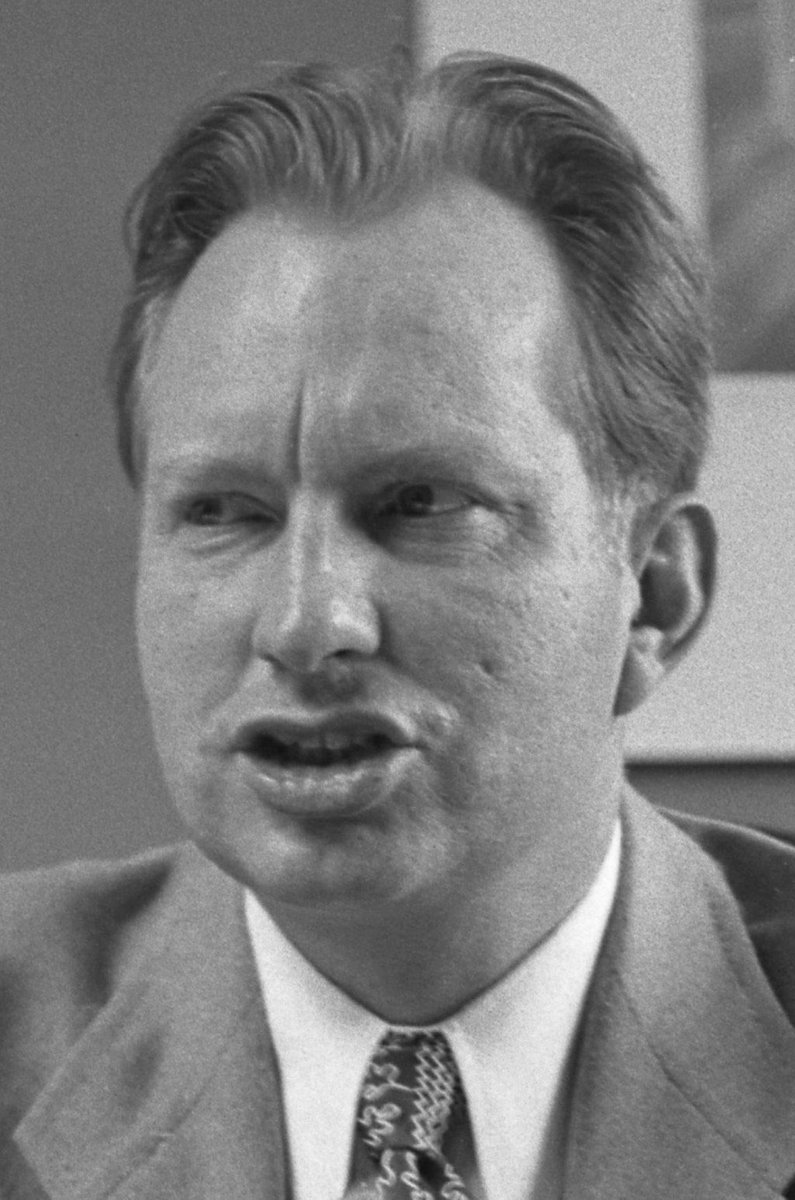
into the Pasadena mansion of John "Jack" Whiteside Parsons. A leading rocket propulsion researcher at the California Institute of Technology and a founder of the Jet Propulsion Laboratory, Parsons led a double life as an avid occultist and Thelemite, follower of the English 

ceremonial magician Aleister Crowley and leader of a lodge of Crowley's magical order, Ordo Templi Orientis (OTO).
JPL traces its beginnings to 1936 in the Guggenheim Aeronautical Laboratory at the California Institute of Technology (GALCIT).
Daniel Guggenheim and his son,
JPL traces its beginnings to 1936 in the Guggenheim Aeronautical Laboratory at the California Institute of Technology (GALCIT).
Daniel Guggenheim and his son,
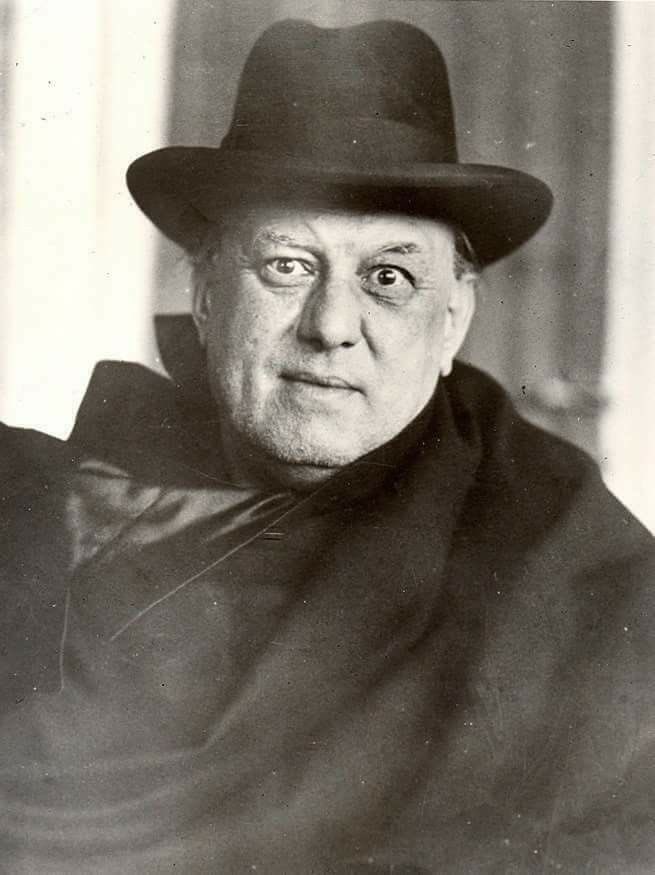
Harry Guggenheim (an aviator) established the Daniel Guggenheim Fund for the Promotion of Aeronautics on June 16, 1926.
The Guggenheim family then entered a lengthy struggle with the American Smelting and Refining Company (ASARCO), backed by the Rockefeller family.
ASARCO,
The Guggenheim family then entered a lengthy struggle with the American Smelting and Refining Company (ASARCO), backed by the Rockefeller family.
ASARCO,

Kennecott Copper and other family-owned companies, the Guggenheims mined tin in Bolivia, gold in the Yukon, diamonds and rubber in the Belgian Congo, diamonds in Angola, and copper in Alaska, Utah, and Chile.
Caltech was founded as a preparatory and vocational school by Amos G.
Caltech was founded as a preparatory and vocational school by Amos G.
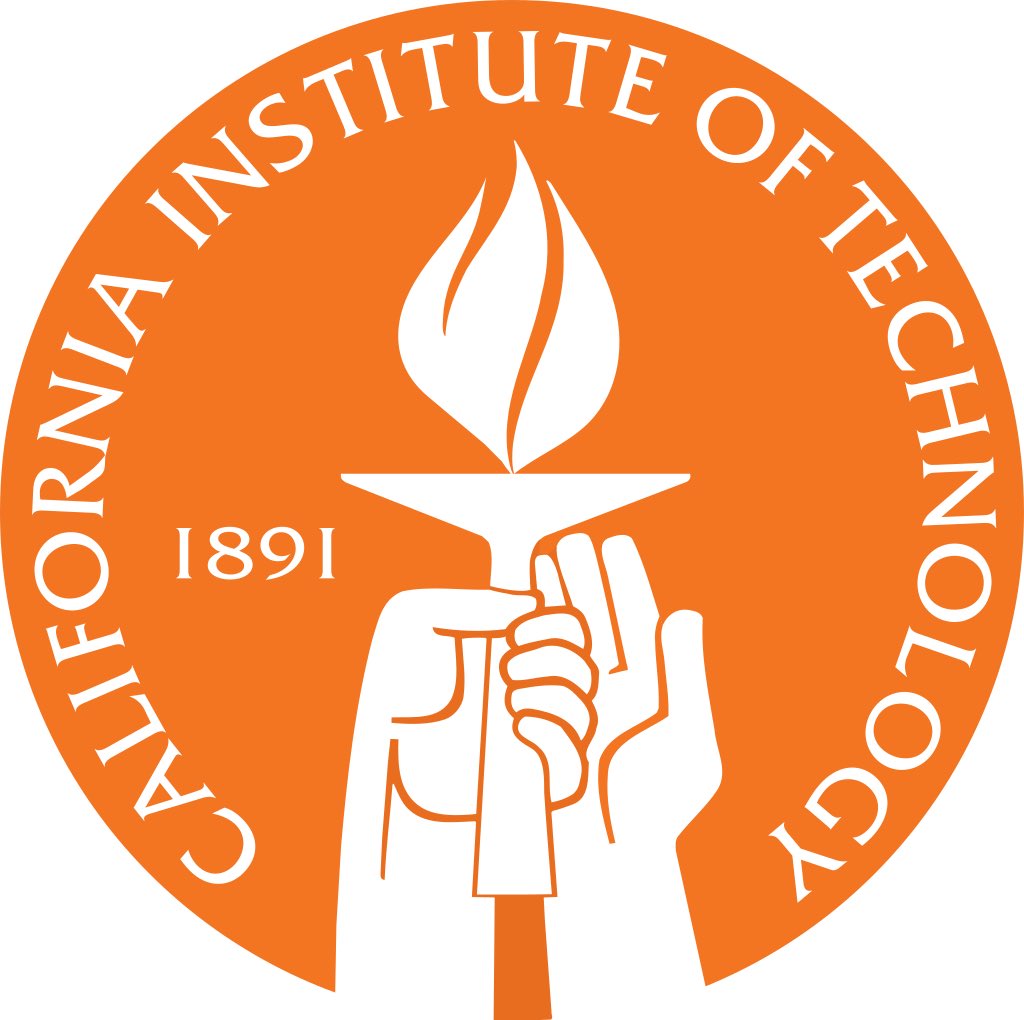
Throop in 1891 and began attracting influential scientists such as George Ellery Hale, Arthur Amos Noyes, and Robert Andrews Millikan in the early 20th century.
In 1934, Caltech was elected to the Association of American Universities, and the antecedents of NASA's Jet Propulsion
In 1934, Caltech was elected to the Association of American Universities, and the antecedents of NASA's Jet Propulsion
Laboratory, which Caltech continues to manage and operate, were established between 1936 and 1943 under Theodore von Kármán.
Caltech started as a vocational school founded in present-day Old Pasadena on Fair Oaks Avenue and Chestnut Street on September 23, 1891, by local
Caltech started as a vocational school founded in present-day Old Pasadena on Fair Oaks Avenue and Chestnut Street on September 23, 1891, by local
businessman and politician Amos G. Throop.
At the time of the Great Chicago Fire, Amos Throop was the City Treasurer of Chicago.
The Indiana Colony refers to a group of Indiana residents who settled the area known today as Pasadena, California.
The settlers met in the home
At the time of the Great Chicago Fire, Amos Throop was the City Treasurer of Chicago.
The Indiana Colony refers to a group of Indiana residents who settled the area known today as Pasadena, California.
The settlers met in the home
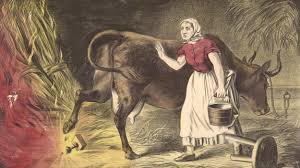
of Thomas Elliott, and Daniel Berry was selected to visit Southern California with a direction to find suitable land at a suitable price.
The nearly 4,000-acre (16 km2) property would become The Indiana Colony, the genesis of present-day Pasadena, California.
Herbert Hoover
The nearly 4,000-acre (16 km2) property would become The Indiana Colony, the genesis of present-day Pasadena, California.
Herbert Hoover
Jr's interest in radio next turned him to the field of exploration geophysics, and the use of radio to prospect for oil.
He founded United Geophysical, headquartered in Pasadena, California, in 1935 and by 1939 he had 200 employees working in five labs perfecting the art of
He founded United Geophysical, headquartered in Pasadena, California, in 1935 and by 1939 he had 200 employees working in five labs perfecting the art of
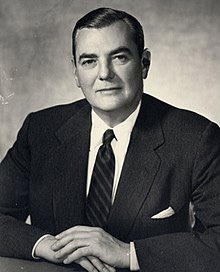
exploring for oil by seismological means. In 1937, he founded a related company, Consolidated Engineering Corporation (CEC), which focused on instrument manufacturing.
CEC was founded in 1937 by Herbert Hoover Jr., eldest son of former United States president Herbert Hoover, as
CEC was founded in 1937 by Herbert Hoover Jr., eldest son of former United States president Herbert Hoover, as
sole proprietor. Harold Washburn was hired in 1938 as VP for Research, with a mandate to develop instruments applicable to petroleum prospecting.
Like his father, Hoover had trained as a mining engineer at Stanford University, studying under Washburn. He earned a PhD in
Like his father, Hoover had trained as a mining engineer at Stanford University, studying under Washburn. He earned a PhD in
Electrical Engineering from California Institute of Technology in 1932. His thesis Professor was Ernest Lawrence, a physicist at the University of California, Berkeley. Four physicists from California Institute of Technology were hired into the Research Department in a project to
develop a mass spectrometer.
Along with Oak Ridge National Laboratories, they developed an ion trap mass spectrometer chemical detection system for chemical warfare agents, and these units are now being deployed on U.S. Army reconnaissance vehicles. When fitted for bio-aerosol
Along with Oak Ridge National Laboratories, they developed an ion trap mass spectrometer chemical detection system for chemical warfare agents, and these units are now being deployed on U.S. Army reconnaissance vehicles. When fitted for bio-aerosol
sampling, CBMS II has also demonstrated effective biological warfare agent detection.
In 1943, President of Venezuela Isaías Medina Angarita invited Hoover to advise the Venezuelan government in the negotiation of oil contracts with foreign governments. While there, Hoover
In 1943, President of Venezuela Isaías Medina Angarita invited Hoover to advise the Venezuelan government in the negotiation of oil contracts with foreign governments. While there, Hoover
oversaw a substantial rewriting of Venezuela's oil laws, which would provide a model for other countries in the years to come.[10]
In 1944, the new Shah of Iran, Mohammad Reza Pahlavi, hired Hoover's company to advise the government of Iran in the negotiation of new oil
In 1944, the new Shah of Iran, Mohammad Reza Pahlavi, hired Hoover's company to advise the government of Iran in the negotiation of new oil
concessions. At the time, the only oil company operating in Iran was the Anglo-Iranian Oil Company, operating under the terms of the D'Arcy Concession, as renegotiated in 1933. After the Anglo-Soviet invasion of Iran, Standard Oil, the Socony-Vacuum Oil Company, the Sinclair
Oil Corporation, Royal Dutch Shell, and the Soviet Union all sought access to the Iranian oil fields.
United Geophysical was later bought by Union Oil, though Hoover stayed on as president of the company.
The Union Oil Company of California was founded on October 17, 1890, in
United Geophysical was later bought by Union Oil, though Hoover stayed on as president of the company.
The Union Oil Company of California was founded on October 17, 1890, in
Santa Paula, California, by Lyman Stewart, Thomas Bard, and Wallace Hardison. It was a merger of three Southern Californian oil companies: the Sespe Oil Company and the Torrey Canyon Oil Company (both owned by Bard) and the Hardison and Stewart Oil Company. All three were notable
as being completely unaffiliated with Standard Oil.
In 1919, the Union Oil Company of Delaware was incorporated as a holding company for the Union Oil Company of California.
In 1920, Union Oil purchased the Central Petroleum Company from the Texas Company. In 1922, the
In 1919, the Union Oil Company of Delaware was incorporated as a holding company for the Union Oil Company of California.
In 1920, Union Oil purchased the Central Petroleum Company from the Texas Company. In 1922, the
Union Oil Associates, Inc. was incorporated in California as a holding company to prevent control of the Union Oil Company of California passing to foreign interests after the merger of the Union Oil Company of Delaware with Royal Dutch Company.
Unocal was one of the key
Unocal was one of the key
players in the CentGas consortium, an attempt to build the Trans-Afghanistan Pipeline to run from the Caspian area, through Afghanistan and probably Pakistan, to the Indian Ocean. One of the consultants to Unocal at that time was Zalmay Khalilzad, former US ambassador to
Afghanistan, Iraq, and the United Nations.
In the 1980s, CIA chief Bill Casey had revived the agency's practice of gaining intelligence from traveling businessmen.
Central Asia Gas Pipeline, Ltd. (CentGas) was a consortium formed in the 1990s to develop a project to build the
In the 1980s, CIA chief Bill Casey had revived the agency's practice of gaining intelligence from traveling businessmen.
Central Asia Gas Pipeline, Ltd. (CentGas) was a consortium formed in the 1990s to develop a project to build the
Trans-Afghanistan Pipeline from Turkmenistan's natural gas fields to Pakistan.
The consortium was led by Union Oil Company of California (Unocal) and Delta Oil Company of Saudi Arabia. Original members of Cent Gas were:
•Unocal Corporation - one of the world's leading energy
The consortium was led by Union Oil Company of California (Unocal) and Delta Oil Company of Saudi Arabia. Original members of Cent Gas were:
•Unocal Corporation - one of the world's leading energy
resource and project development companies
•Delta Oil Company (Saudi Arabia) - privately owned by Badr M. Al-Aiban
•Gazprom (Russia)
•Government of Turkmenistan; Turkmenrusgas
•Indonesia Petroleum, Ltd. (INPEX) (Japan)
•ITOCHU Oil Exploration Co.,
•Delta Oil Company (Saudi Arabia) - privately owned by Badr M. Al-Aiban
•Gazprom (Russia)
•Government of Turkmenistan; Turkmenrusgas
•Indonesia Petroleum, Ltd. (INPEX) (Japan)
•ITOCHU Oil Exploration Co.,
Ltd. (CIECO) (Japan)
•Hyundai Engineering and Construction (South Korea) - among top global general contractors
•Crescent Group (Pakistan) - premier industrial and financial conglomerate in Pakistan
The Turkmenistan–Afghanistan–Pakistan–India (TAPI) Pipeline, also known as
•Hyundai Engineering and Construction (South Korea) - among top global general contractors
•Crescent Group (Pakistan) - premier industrial and financial conglomerate in Pakistan
The Turkmenistan–Afghanistan–Pakistan–India (TAPI) Pipeline, also known as
Trans-Afghanistan Pipeline, is a natural gas pipeline being developed by the Galkynysh – TAPI Pipeline Company Limited with participation of the Asian Development Bank. The pipeline will transport natural gas from the Galkynysh Gas Field in Turkmenistan through Afghanistan into
Pakistan and then to India.
Proponents of the project see it as a modern continuation of the Silk Road.
The roots of this project lie in the involvement of international oil companies in Kazakhstan and Turkmenistan beginning of 1990s.
Since the pipeline was to pass through
Proponents of the project see it as a modern continuation of the Silk Road.
The roots of this project lie in the involvement of international oil companies in Kazakhstan and Turkmenistan beginning of 1990s.
Since the pipeline was to pass through
Afghanistan, it was necessary to work with the Taliban. The U.S. ambassador to Pakistan, Robert Oakley, left his post and was hired by CentGas in 1997. In January 1998, the Taliban, selecting CentGas over Argentinian competitor Bridas Corporation, signed an agreement that
allowed the proposed project to proceed. In June 1998, Russian Gazprom relinquished its 10% stake in the project. On 7 August 1998, American embassies in Nairobi and Dar es Salaam were bombed. The United States alleged that Osama bin Laden was behind those attacks, and all
pipeline negotiations halted, as the Taliban's then leader, Mullah Omar, announced that bin Laden had the Taliban's support. Unocal withdrew from the consortium on 8 December 1998, and soon after closed its offices in Afghanistan and Pakistan.
After September 11 attacks some
After September 11 attacks some
people came to believe that a possible motivation for the attacks included justifying the invasions of Afghanistan as well as geostrategic interests such as the Trans-Afghanistan Pipeline project.
The leading partner of the project is Türkmengaz.
Türkmengaz is the national gas
The leading partner of the project is Türkmengaz.
Türkmengaz is the national gas
company of Turkmenistan. It is the largest gas company in Central Asia. The chairman of the company, with rank of minister of state, is Batyr Amangeldiyevich Amanov.
Bridas Corporation was founded by the Bulgheroni family in 1948, and grew to become the second-largest producer
Bridas Corporation was founded by the Bulgheroni family in 1948, and grew to become the second-largest producer
of fossil fuels in Argentina.
Bridas began expanding into the Central Asian energy sector in 1987, and secured its first large-scale contract (gas exploration rights in Turkmenistan), in 1992.
Between 1995 and 1997, CEO Carlos Bulgheroni was personally involved in negotiations
Bridas began expanding into the Central Asian energy sector in 1987, and secured its first large-scale contract (gas exploration rights in Turkmenistan), in 1992.
Between 1995 and 1997, CEO Carlos Bulgheroni was personally involved in negotiations
between Bridas and the governments of Pakistan and Turkmenistan, as well as the ruling Taliban faction in Afghanistan, to build the Trans-Afghanistan Gas Pipeline.
Carlos Alberto Bulgheroni (March 9, 1945 – September 3, 2016) was an Argentine businessman prominent in the
Carlos Alberto Bulgheroni (March 9, 1945 – September 3, 2016) was an Argentine businessman prominent in the
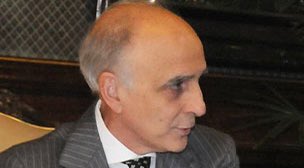
nation's energy sector, and the country's richest man at the time of his death.
He joined his father Alejandro in Bridas Corporation, founded by the Bulgheroni family in 1948 and by the 1970s one of the largest private firms in the Argentine energy sector. The senior Bulgheroni
He joined his father Alejandro in Bridas Corporation, founded by the Bulgheroni family in 1948 and by the 1970s one of the largest private firms in the Argentine energy sector. The senior Bulgheroni
died in 1985 and left a controlling stake in the firm to Carlos and his elder brother, Alejandro. Carlos Bulgheroni became the firm's chief political point man, establishing good working relationships with the various administrations in power since 1983. He was named president
and chairman in 1993; president of the BP-controlled PanAmerican Energy in 1997; of Allis-Chalmers's energy unit in 2006; and of EDIC, a company specializing in the exploration and production of oil and natural gas in the North African, Russian, Central Asian, and Middle and
Far Eastern markets.
Bulgheroni obtained, in 1992, some of the first gas exploration concessions granted in Turkmenistan to a foreign energy company. He was further involved during 1997 in negotiations between Bridas and the ruling Taliban faction in Afghanistan to build the
Bulgheroni obtained, in 1992, some of the first gas exploration concessions granted in Turkmenistan to a foreign energy company. He was further involved during 1997 in negotiations between Bridas and the ruling Taliban faction in Afghanistan to build the
Trans-Afghanistan Gas Pipeline from Turkmenistan to Pakistan. These negotiations were in competition with those undertaken by Unocal, and although an agreement with Unocal-led corporation CentGas was reached, the deal was forfeited in January 1998 in favor of one with Bridas.
Instability in Afghanistan delayed construction of the pipeline, however, and following the United States Invasion of Afghanistan in October 2001, the Bridas contract was rescinded in favor of the former one with Unocal.
At Center for Strategic and International Studies (CSIS),
At Center for Strategic and International Studies (CSIS),
in addition to acting as a trustee, he also serves as an international councillor and a senior adviser to the Space Exploration Initiative.
On July 20, 1989, the 20th anniversary of the Apollo 11 Moon landing, US President George H. W. Bush announced plans for what came to be
On July 20, 1989, the 20th anniversary of the Apollo 11 Moon landing, US President George H. W. Bush announced plans for what came to be
known as the Space Exploration Initiative (SEI). In a speech on the steps of the National Air and Space Museum he described plans calling for constructing Space Station Freedom, sending humans back to the Moon "to stay" and ultimately sending astronauts to explore Mars.
He
He
asked Vice President Dan Quayle to lead the National Space Council in determining what was needed to carry out these missions in terms of money, manpower and technology.
In 1993, Quayle became the trustee of the Hudson Institute.
In 1999, Quayle joined Cerberus Capital
In 1993, Quayle became the trustee of the Hudson Institute.
In 1999, Quayle joined Cerberus Capital
Management, a private-equity firm, where he serves as chair of the company's Global Investments division.
As chair of the international advisory board of Cerberus Capital Management, he recruited former Canadian prime minister Brian Mulroney, who would have been installed as
As chair of the international advisory board of Cerberus Capital Management, he recruited former Canadian prime minister Brian Mulroney, who would have been installed as
chair if Cerberus had acquired Air Canada.
Mulroney would frequently tell stories about newspaper publisher Robert R. McCormick, whose company had founded Baie-Comeau.
Robert McCormick was admitted to the Illinois bar in 1907. The following year, he co-founded the law firm that
Mulroney would frequently tell stories about newspaper publisher Robert R. McCormick, whose company had founded Baie-Comeau.
Robert McCormick was admitted to the Illinois bar in 1907. The following year, he co-founded the law firm that
became Kirkland & Ellis, which represented the Tribune Company.
Mulroney is the grandfather of Lewis H. Lapham III, twins Pierce Lapham and Elizabeth Theodora Lapham, and Miranda Brooke Lapham from daughter, Caroline; and twins Brian Gerald Alexander and John Benedict Dimitri
Mulroney is the grandfather of Lewis H. Lapham III, twins Pierce Lapham and Elizabeth Theodora Lapham, and Miranda Brooke Lapham from daughter, Caroline; and twins Brian Gerald Alexander and John Benedict Dimitri
and Isabel Veronica (known as Ivy) by son Ben and his wife Jessica. Brian and John served as page boys and train bearers at the wedding of Prince Harry and Meghan Markle on May 19, 2018, which their parents also attended, and their sister was one of the bridesmaids.
Since leaving office, Mulroney has served as an international business consultant and remains a partner with the law firm Norton Rose. He currently sits on the board of directors of multiple corporations, including The Blackstone Group, Barrick Gold, Quebecor Inc., Archer
Daniels Midland, Cendant Corp. (New York), AOL Latin America, Inc. (New York), Cognicase Inc. (Montreal) and Acreage Holdings, one of the largest vertically integrated cannabis companies in the United States. He is a senior counselor to Hicks, Muse, Tate & Furst, a global private
equity fund in Dallas, chairman of Forbes Global (New York), and was a paid consultant and lobbyist for Karl-Heinz Schreiber beginning in 1993.
The origin of Norton Rose dates back to 1794 when the sole practitioner Robert Charsley opened for business. In 1821, Charsley
The origin of Norton Rose dates back to 1794 when the sole practitioner Robert Charsley opened for business. In 1821, Charsley
formed a partnership with William Barker, creating Charsley & Barker. Later that century, Phillip Rose (later Sir Philip Rose) joined the firm, creating Barker & Rose. In the years that followed, a new partnership between Phillip Rose and Henry Elland Norton was formed under the
name Barker, Rose & Norton. By the turn of the 20th century, the firm was called Norton, Rose, Norton & Co., and had maintained its position as a powerful force in the City of London for six decades.
Sir Philip Rose, 1st Baronet (12 April 1816 – 17 April 1883) was the son of
Sir Philip Rose, 1st Baronet (12 April 1816 – 17 April 1883) was the son of
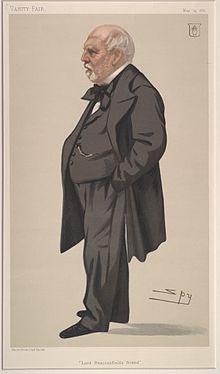
William Rose, an Assistant Surgeon in the British Indian Army and Charlotte Rose (born Baly).
He was also a close friend of and adviser to Benjamin Disraeli.
His descendants include the writers Ian Fleming and Peter Fleming.
Robert Fleming & Co. was an asset manager and
He was also a close friend of and adviser to Benjamin Disraeli.
His descendants include the writers Ian Fleming and Peter Fleming.
Robert Fleming & Co. was an asset manager and
merchant bank founded in Dundee, Scotland, in 1873. In 1909, the firm moved its headquarters to London, England. It was sold to Chase Manhattan Bank for over $7 billion in 2000. Flemings was a 50% partner in the Asian investment bank Jardine Fleming.
A contemporary of J. P.
A contemporary of J. P.
Morgan and a close business associate and friend of Jacob Schiff of Kuhn, Loeb & Co., Fleming was widely known and respected in financial circles on both sides of the Atlantic.
• • •
Missing some Tweet in this thread? You can try to
force a refresh



